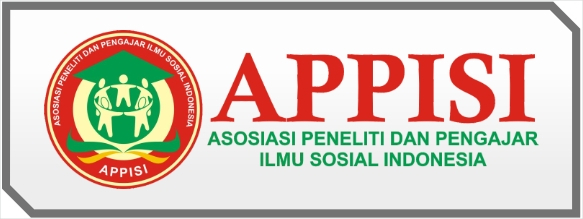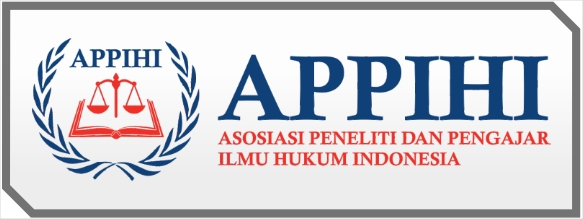Analisis Kemampuan Visual-Spasial Dalam Menyelesaikan Masalah Geometri Ditinjau Dari Gaya Belajar Siswa Kelas X SMK Yadika 8 Jati Mulya
DOI:
https://doi.org/10.55606/khatulistiwa.v3i4.2371Keywords:
Visual Spatial Ability, Learning Style, GeometryAbstract
Based on preliminary study data at Yadika 8 Jatimulya Vocational School, it was found that mathematics scores, especially in understanding and solving geometric problems, were still low. This information was obtained through documentation studies and interviews with mathematics teachers in class X majoring in AKL-1, who revealed students' difficulties in understanding and solving geometry problems. Even after the material and examples have been taught, students still experience difficulties when faced with new questions with changes in numbers and question patterns. Their ability to analyze story problems and picture questions and relate them to objects around them is also relatively low. In response to these findings, this research aims to describe the spatial abilities of students who have visual, auditory and kinesthetic learning styles. This research is entitled "Analysis of Spatial Visual Ability in Solving Geometry Problems in View of the Learning Style of Class X Students of Vocational School Yadika 8 Jatimulya" and applies descriptive research methods with a qualitative approach. Research subjects were selected using a purposive sampling technique, namely with certain considerations after giving a learning style questionnaire to all class X students at SMK Yadika 8 Jatimulya. One class was selected that had students with three different learning styles: visual, auditory, or kinesthetic. Next, students were given a written test on flat-sided spatial figures to measure their spatial abilities, and unstructured interviews were used as a data collection method. The results showed variations in students' visual spatial abilities based on their learning styles. Students with a visual learning style have good abilities in imagination, concepts, problem solving, and searching for visual patterns. Students with an auditory learning style have good abilities in concepts and problem solving, although their imagination is less strong. Students with a kinesthetic learning style seem to face difficulties in all aspects of visual-spatial abilities. In addition, the test results show that the majority of students have a moderate level of visual spatial ability. They are able to understand geometric concepts and apply them well, but there are some students who show low visual spatial abilities that require further attention. The research results also revealed a correlation between students' learning styles and their visual spatial abilities. Students with a visual learning style tend to have higher visual-spatial abilities than students with an auditory or kinesthetic learning style. This highlights the importance of understanding students' learning styles in designing effective learning strategies. Overall, this research emphasizes the importance of visual spatial abilities in solving geometric problems and the influence of students' learning styles on these abilities. This has important implications in developing learning strategies that suit individual student learning styles, especially in the context of learning geometry at SMK Yadika 8 Jati Mulya. Teachers can utilize the results of this research to design more effective learning approaches and increase the potential of each student.
References
Ambarwati, “Analisis Kemampuan Visual Spasial Siswa Dalam Menyelesaikan Soal Matematika Berstandar Pisa Konten Shape And Space Ditinjau Dari Level Berpikir Geometri Van Hiele.”(hal.11)
DePorter, B., & Hernacki, M. (1999). Quantum Learning Membiasakan Belajar Nyaman dan Menyenangkan. New York: Dell Publishing .
Evi Sundari and Mega Nur Prabawati, “Analisis Kemampuan Visual Thinking Dalam Menyelesaikan Domain Soal Pisa” 1, no. 2 (2019): 131–138
Filda, D. (2023). Pengembangan Desain Pembelajaran Topik Transformasi Geometri Berbasis Realistic Mathematics Education untuk Meningkatkan Kemampuan Pemecahan Masalah Matematis Siswa Kelas IX SMP (Doctoral dissertation, Fakultas Bahasa dan Seni).
Harefa, D., & Sarumaha, M. (2020). Teori Pengenalan Ilmu Pengetahuan Alam Sejak Dini. Pm Publisher.
Hass, S. C. (2003). Algebra for Gifted Visual-Spatial Learners. Gifted Education (Spring), 34(1), 34–43.
Harnum, T. S. Analisis Kemampuan Visual-Spatial Thinking Siswa SMA pada Materi Transformasi Geometri (Bachelor's thesis, Jakarta: FITK UIN Syarif Hidayatullah Jakarta).
Herawati, I. (2023). Pengembangan Lembar Kerja Peserta Didik Berbasis Blended Learning Untuk Meningkatkan Kemampuan Belajar Siswa Dalam Pembelajaran Trigonometri Di Sekolah Menengah Atas. (hal.11)
Mamik. (2015). Metodologi Kualitatif (1st ed.; M. C. Anwar, Ed.). Sidoarjo: Zifatama Publisher. Retrieved from http://repo.poltekkesdepkes sby.ac.id/5047/1/Metode%20Kua litatif.pdf
Sugiyono. (2013). Cara Mudah Menyusun Skripsi, Tesis, dan Disertasi (3rd ed.). Yogyakarta: Alfabeta Bandung.
Sugiyono. (2017). Metode Penelitian Kualitatif. Alfabeta
Sujana, I. W. C. (2019). Fungsi dan tujuan pendidikan Indonesia. Adi Widya: Jurnal Pendidikan Dasar, 4(1), 29-39.2
Suprayitno, A., & Wahyudi, W. (2020). Pendidikan karakter di era milenial. Deepublish.
Isnaini, N., Sugiarti, T., Anka Monalisa, L., Trapsilasiwi, D., Oktavianingtyas, E., Kalimantan, J., & Jember, K. T. (2020). Kemampuan Spasial Siswa dalam Menyelesaikan Soal PISA Konten Shape and Space Berdasarkan Gaya Belajar. Jurnal Universitas Jember, 11(2), 23– 35.
https://doi.org/https://doi.org/10.1 9184/kdma.v11i2.19801

















